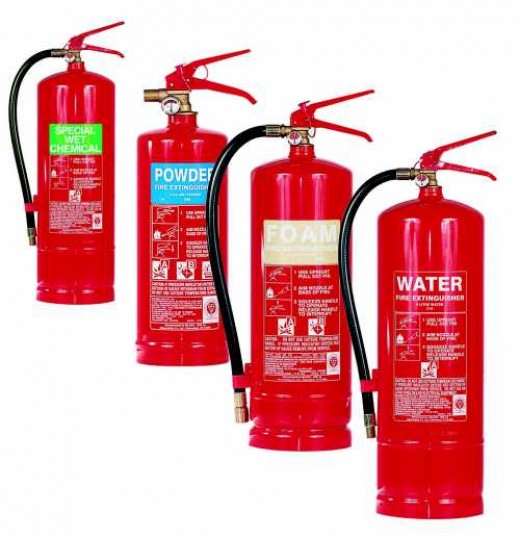We see fire extinguishers every day, but if it was necessary would we know how to use them or what they were for?
Fire extinguishers are a legal requirement in stores, restaurants, offices, supermarkets, and any other area of trade. They help stop the spread of fires, but many people get confused with the different types of fire extinguishers, and when and how to use them.

There are five different classes of fire extinguisher, the class names of the extinguishers include: Class A, Class B, Class C, Class D, and Class K.
Class A extinguishers are used for several combustible materials, including: paper, wood, and cardboard. The geometric symbol on the extinguisher is a green triangle.
Class B extinguishers are used on fires caused by gasoline, kerosene, and oil. The geometric symbol on the extinguisher is a red square.
Class C types are used for fires that involve electrical equipment, such as household appliances e.g. kettles, toasters etc. and circuit breakers. The geometric symbol is a blue circle.
Class D types are slightly different to normal extinguishers, they are found in chemical laboratories. They help put out fires caused by combustible metals, such as: magnesium, titanium, and sodium. The geometric symbol is a yellow decagon.
Class K types are usually found within kitchen environments, and they help deal with fires caused by cooking oils and cooking appliances. The geometric symbol on this type of extinguisher is a black hexagon.
When confronted with a fire, the chief concern is safety; for yourself and others (colleagues and customers). Trying to battle a fire may result in injury, and maybe even death. Fire safety programmes always maintain that staff should be aware of the fire escape routes within their workplace, as well as the fire safety regulations and procedures. Fires should only be tackled if they are small and able to be tackled, by someone who has been trained to use a fire extinguisher. Don’t try and fight a big fire, this could not only put yourself in danger but also others, instead you should smash the ire safety button to set off the fire alarms, evacuate and then notify the fire brigade.
Once the fire service has been notified be sure to remain outside the building until they say that it is safe to return inside. Any fire that is too large to tackle with an extinguisher should be left to them, safety is the most important factor when it comes to fires so evacuating and being safe is more important than trying to be a hero.
Article was written by Max Simpson from www.fireprotectiononline.co.uk, experts in Fire extinguishers.
How To Tell The Difference Between Types Of Fire Extinguishers

